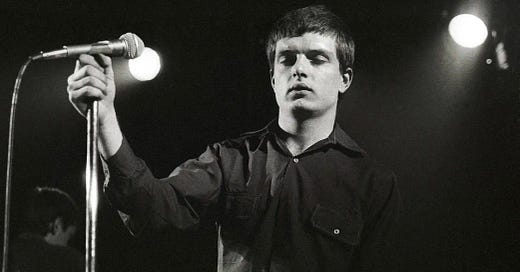Ian Curtis: The Literary Mind Behind Joy Division
The literary influences behind Curtis' lyrics
Image credit: Rob Verhorst/Redferns
Welcome to Vintage Cafe. This is my little corner for sharing the music, books, films, art, travel, and stories I love. Each post is written with care, like a note to a friend. Think of it as chatting over coffee: no fuss, just things that caught my ear or eye, or made me smile. If you like what you read, you can support the page and get even more good stuff coming your way. Either way, I’m really glad you’re here.
Ian Curtis was more than just the enigmatic frontman of Joy Division. He was a poet, a seeker, and a man whose inner world was shaped as much by books as it was by music. While his haunting vocals and stark lyrics have cemented his place in post-punk history, the literary influences behind his words reveal a deeply introspective soul. His reading habits—ranging from existentialism to science fiction—infused his lyrics with a sense of fatalism, alienation, and raw intensity.
Joy Division’s music was not just an artistic statement but an entire aesthetic: bleak, hypnotic, and charged with an eerie sense of impending doom. Curtis’s lyrics, filled with fragmented narratives and brooding introspection, mirrored the pages of the books he consumed. His influences were woven into the fabric of Joy Division’s songs, adding layers of meaning that continue to resonate with listeners decades later.
A Band That Redefined a Genre
Emerging from Manchester’s post-industrial gloom in the late 1970s, Joy Division crafted a sound that was as stark and brutal as the city’s landscape. While their early performances carried the raw energy of punk, their music quickly evolved into something more haunting and atmospheric. The jagged aggression of their early Warsaw days gave way to a distinct sonic identity—one where minimalist guitar lines, cavernous bass, and mechanical drum patterns created a sense of unease and isolation.
Keep reading with a 7-day free trial
Subscribe to Vintage Cafe to keep reading this post and get 7 days of free access to the full post archives.






